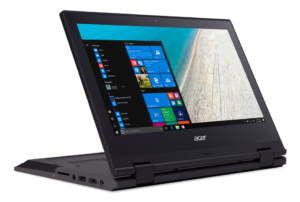Cheap Laptops That Come At A Price
Our suggestion here at Teknyka is to spend at least $600 on a new laptop to ensure that you’ll be buying something that will last. The idea is that the parts inside won’t prematurely fail and their specs will be relevant for at least 4-5 years down the road. While it’s easy for us to put up that suggestion, we understand that budgets, especially in an unexpected laptop replacement situation, don’t always allow for that much to be invested. HP and Acer are releasing Windows 10 S laptops for $299 later this year. While the price is tempting, we’re going to give you a couple of reasons why you shouldn’t be purchasing those – that is unless you are alright with the trade-off.
Most of why we don’t suggest spending this little on a laptop is the parts that are inside – they are usually either barely to today’s standards or even under them. That means right off the gate you are running an underperforming machine that will be slow. And what can we as technicians do about it? Very little, if anything.
There is yet another reason why we wouldn’t recommend these two laptops, however – Windows 10 S. But it’s Windows 10, you are probably saying to yourself – Teknyka gave us the suggestion to use it now. Ah, but it’s not just Windows 10, it’s Windows 10 S. What does the “S” stand for? It’s up for debate but it’s a locked down version of Windows. Essentially, you can only run apps from the Microsoft Store. This means you can’t run Google Chrome, iTunes, nor Adobe Photoshop, you can’t purchase software outside of the Microsoft Store and run it on this computer, and you can’t change your default browser or search settings (it will stay with Bing).
Basically, Windows 10 S was created to compete with Chromebooks, which are very similarly locked down in fashion, except with Google products.
 The HP ProBook x360 Education Edition is HP’s answer to this with an 11.6″ screen, 1366 x 768 display, Intel Celeron processor, 4 GB RAM, and 64 GB of storage which likely can’t be upgraded. If those specs aren’t sending alarms of an underpowered computer to you, then take our word for it, it is. With that being said, it actually would work well for it’s actual purpose – a pre-collegiate school laptop.
The HP ProBook x360 Education Edition is HP’s answer to this with an 11.6″ screen, 1366 x 768 display, Intel Celeron processor, 4 GB RAM, and 64 GB of storage which likely can’t be upgraded. If those specs aren’t sending alarms of an underpowered computer to you, then take our word for it, it is. With that being said, it actually would work well for it’s actual purpose – a pre-collegiate school laptop.

The Acer TravelMate Spin B1 Convertible has a fancy name for a very similar laptop. 11.6″ touchscreen, 1080p display, Intel Celeron processor, 4 GB RAM, and 64 GB of storage. While we’d recommend this laptop over HP’s, Acer as a company has annually produced laptops with some of the poorest quality parts, leading to premature failure.
Again, both of these laptops do have a good purpose (mostly for school) but the limitations of them aren’t very obvious and we want you to realize that it isn’t such a “great deal.” Not only do you get a slower machine, but you’re also getting one so locked down that it could be very frustrating to use. Yes, it would help cut down on malware and viruses tremendously, but we would certainly not discount it completely from getting infected. On top of that, any software that needs to be run on the computer that doesn’t come directly from the Microsoft Store will be forbidden. That can become an issue for some classes.
Again, as of this writing both of these laptops are not available quite yet but if I were to guess, they will be released before the next school year begins.
If you have any other additional questions, feel free to give us a call!



